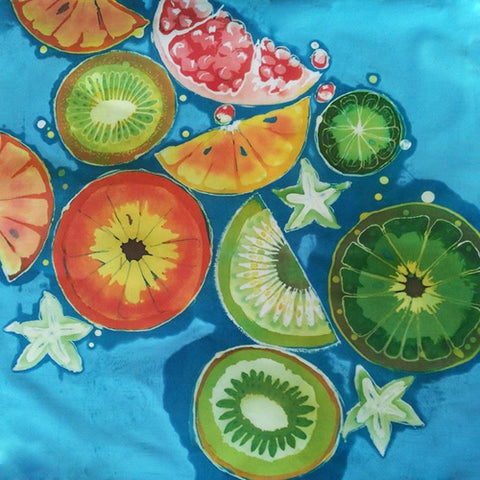As Halloween fast approaches, it’s time to get those costumes ready. We think it’s a perfect opportunity to try out Speedball Night Glo fabric ink! Print
glow in the dark Halloween messages, pictures, or even your kids’ spooky drawings onto their own costume. That will keep ’em busy this half term.
We’ve chosen to print a skeleton and here’s how we did it:

Start by drawing your design onto copy paper, making sure that it fits onto the surface of the top. We’re using a dark green school jersey – this project
is perfect for up-cycling your kids’ old worn out ones. The tattier the better!

When you’re happy with your design, cut it out using a craft knife or scalpel.


We also made an arm-bones stencil for the sleeves of our top on a separate sheet of paper.

Place a piece of newspaper inside your garment, just in case any ink goes through to the other side. Lay it flat on a slightly padded surface if you have
one. Place your stencil where you would like your design to be printed.

Tape up the edges of your screen on the front and the back of the mesh. Place the screen on top of the stencil. Make sure there are no gaps around the
edges of your stencil. If there are, add more more tape to the screen to fill the gaps.

Spoon a line of Night Glo ink along the top of the screen.

Use your squeegee at a 45 degree angle to drag the ink down the screen. This coats the mesh in a thin, even layer of ink.


Scrape any excess ink off the squeegee. Bring the squeegee back to the top and pull it down the screen, again at a 45 degree angle. The night glo ink is
pretty thick so will require a quite a lot of pressure to get through the mesh. You may want to get someone to hold the screen still as you will need
to use both hands on the squeegee. If you are printing with your kids, you might have to help them push hard enough on this bit.

Carefully remove the screen to reveal your print! Peel off the stencil and wash the ink out of the mesh straight away.

When your screen is dry, repeat the process with any additional stencils. We used our arm-bone stencil on each sleeve. Don’t forget to wash your screen
right away or the ink will dry and ruin the mesh.

Our finished skeleton top!

If you would like to have a go yourself (of course you do) you will need:
- Garment to print on (we used a dark green school jersey)
- Pencil or pen
- Craft knife or scalpel
- Cutting mat
- Screen with 43T mesh
- Parcel tape
- Squeegee
- Speedball Night Glo Fabric Ink


























































































